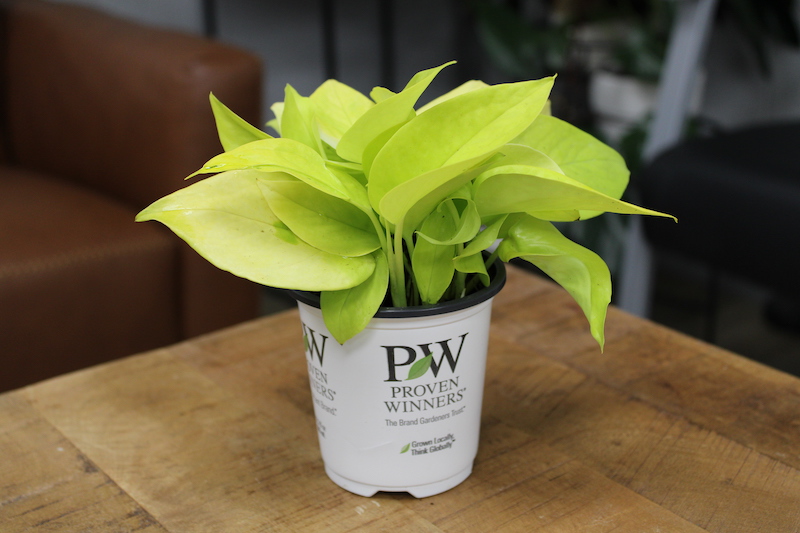Pothos are resilient and easy-to-care-for plants that don’t require too much fussy maintenance. Pothos are adaptable to many different light and environmental conditions, making them a great choice for many different places in your home or office. Like most houseplants, Pothos will benefit from potting in a new container at the correct time. You may want to report your Pothos to change the look of your pot or to benefit the overall health of the plant. Repotting is a good idea when you see signs of pests, disease, or crowding.
Potting Pothos
There are 15 different varieties of Pothos ranging in sizes and colors. The type and size of Pothos will determine the container and environmental conditions it needs. Make sure you have adequate space and light conditions to provide your new Pothos. The most common Pothos is Golden Pothos, which features small heart-shaped leaves on vines that can reach up to 2 - 3 feet and will thrive in a variety of light conditions. Choose a container for your Pothos made of any material such as plastic, terra cotta, or glazed ceramics. Ideally choose a container with a drainage hole and one that is slightly larger than the nursery pot the Pothos was grown in.
You can repot your Pothos plant with a few simple materials including a container, garden gloves, and potting soil. If you are repotting indoors, it is a good idea to set up a workspace with cardboard or newspaper to work on top of for easy cleanup. Begin by removing your Pothos from its current container by tipping the plant over and gently squeezing or tapping the sides to remove the plant. Once removed, make sure the roots are healthy and loosen the root ball slightly. Add soil to the bottom of your new container and then place your Pothos into the pot while adding potting soil to fill in the gaps around the sides. Press down gently around the plant base, adding more soil if needed but not overfilling the pot.
Repotting Pothos
Your Pothos will likely give you signs that it needs to be repotted. The most common reason to repot a Pothos is because it is rootbound. Signs that your Pothos has become rootbound include visible roots peaking out of the drainage hole, stunted growth, and leaves that turn brown. You may also want to repot your pothos if it is in a container without a drainage hole, or the container is broken or cracked. Another common reason to repot a Pothos, or any other plant, is if you simply want to change the look and design of your container. Pothos plants benefit from being repotted about every two years even if it is just to refresh the soil.

Best Soil For Pothos
Pothos plants are native to the tropical islands of French Polynesia and have been naturalized in many tropical regions around the world. In their native and/or preferred habitat, Pothos grows in fertile, rich soil in tropical rainforests. Based on their native origins, Pothos plants prefer a rich soil that is well draining. They thrive in soil that is slightly acidic with a pH of 6.1 - 6.8. To mix your own potting soil, combine elements that are rich in organic material and good for aeration and drainage. You can use a combination of compost, perlite, peat moss, vermiculite, or coconut coir to make a great potting soil for your Pothos.
Pothos Drainage
Pothos prefers an environment that is well draining and will not thrive in soggy soil. Choose a container with drainage holes or use a drill to add holes. Saucers will often come with a pot that has drainage or can be purchased separately. Saucers are great to use because they will catch excess water and soil that might escape from the drainage hole. You can slip the nursery pot inside a decorative cachepot without holes. Water the Pothos plant by removing the nursery pot from the container; set it in a sink or somewhere to catch the drainage runoff, and then return it to the decorative container.
 |
Author Katie Endicott - Published 6-29-2023 |

